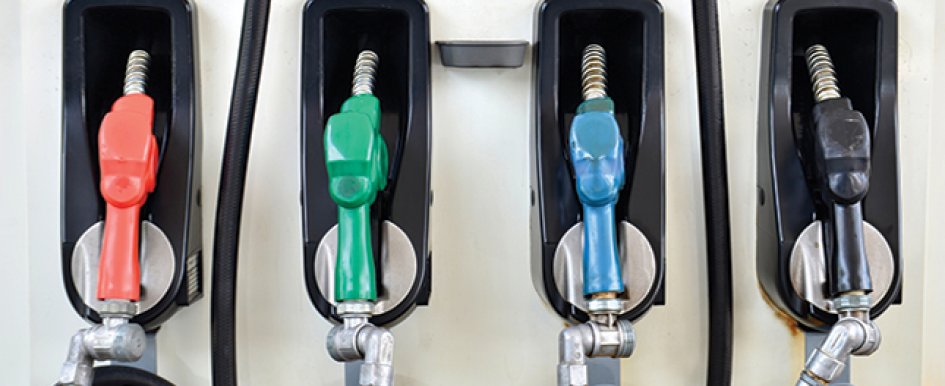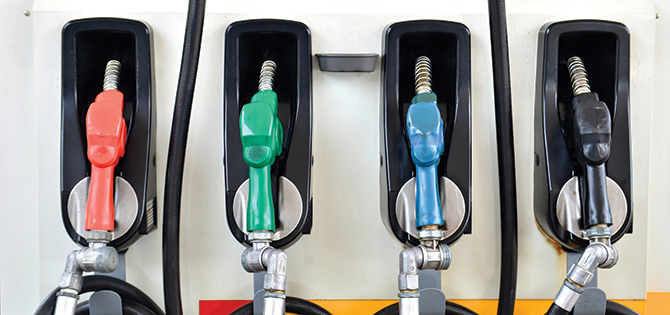
Gasoline containing more than 10 percent ethanol and small engines are a lot like oil and water—they just don’t mix.
Outdoor power equipment commonly found on a construction site, such as portable generators and concrete saws, are designed and certified to operate using fuels containing 10 percent ethanol or less. This blended fuel is commonly referred to as E10. But as biofuels containing an ethanol ratio higher than 10 percent become more widely available for passenger vehicles on the roadways, gas stations are making these fuel options available at more pumps across the nation. The Environmental Protection Agency (EPA) has stated that fuel containing 15 percent ethanol is safe to use only in automobiles that are model year 2001 and newer.
“With this new emphasis on biofuels containing 15 percent ethanol spread across the country, the chance for misfueling outdoor power equipment is extraordinarily high,” says Laura Timm, vice president of public affairs and corporate communications for Briggs & Stratton. “Briggs & Stratton fully supports lessening our dependence on foreign oil, but introducing a fuel that is only compatible for a subset of the marketplace will cause great confusion for consumers and our customers. The fact remains that small engines are not designed for or even legally certified to operate on fuels with ethanol levels higher than 10 percent, and they are being damaged as a result of misfueling.”
Timm says Briggs & Stratton has seen an increase in fuel-related warranty claims of late, even though misfueling voids most engine warranties.
Fortunately, contractors and their crews can take several steps to prevent the pitfalls of ethanol use in small engines.

Look Before You Pump
The most common mistake occurs at the pump. All too often, equipment operators are simply not aware of which fuel type they select. This is the main reason the Outdoor Power Equipment Institute (OPEI) launched its Look Before You Pump public service campaign in the fall of 2013 (lookbeforeyoupump.com).
Timm, who helped spearhead the campaign, said the goal was to reduce the misfueling trend at the gas pump—most of which, she says, could be chalked up to honest fueling mistakes by unaware fuel purchasers. Consumers can no longer assume that the fuel they are putting in their automobiles is also safe for their power equipment.
A recent survey conducted by Harris Interactive and sponsored by OPEI showed that consumers at the gas pump simply weren’t looking at what fuel type they were selecting. According to the survey, 91 percent of respondents said they based their purchases at the gas pump solely on the price of the gas they were pumping. Only 25 percent said they noticed the ethanol content of the fuel they chose.
“This is where the problems start,” Timm says. “Especially because a higher ethanol blended fuel like E15 can be less expensive and fuel a vehicle just fine, but that same fuel can have damaging effects on a piece of power equipment.”
Air-cooled small engines of any make and model are certified to operate only with legacy fuel, or gasoline labeled E10 or less. These legacy fuels often are labeled unleaded or regular and typically contain up to 10 percent ethanol, according to Wayne Rassel, director of parts and service support at Briggs & Stratton.
Pumping the proper fuel for outdoor power equipment is easy if a series of simple steps is followed. First, understand which fuel is appropriate for your equipment. Read the equipment’s operating manual for specific fueling requirements. Second, look before you pump, and make sure the ethanol content is the right fuel for your engine product.
“Even our commercial-grade Vanguard engines are designed with the assumption that only a fuel blend of up to E10 will be used,” says Dan Roche, marketing manager for Briggs & Stratton Commercial Power. “These commercial-grade engines are designed with precision to ensure optimum performance in the field, but that all goes out the window if the wrong fuel is pumped into the tank.”
Watch for Warning Signs
Operating small-engine-powered equipment with fuel higher than E10 can show a variety of symptoms, but the endgame is the same.
“It could be a day, a week or even a month with some larger pieces of equipment, but ultimately, if you fuel a small engine with any fuel with an ethanol content higher than E10, it will fail,” Timm says.
In equipment used on the jobsite every day, the first warning sign of ethanol gas contamination is irregular engine revolutions per minute (rpm). This indicates the air-to-fuel ratio is off in the engine’s carburetor.
For equipment used less often, such as a jobsite generator, the engine oftentimes won’t start at all if the ethanol gas has been allowed to sit in the tank. To determine if an engine has been contaminated, shine a flashlight in the gas tank and look for a spectrum of color layered on the fuel, much like you would see trailing a boat in water. If that rainbow is present, contamination likely has occurred. The color spectrum is caused by water separating from the alcohol in the fuel during downtime. This can occur in any blend of gasoline but is more rapid in fuels with a higher ethanol—a form of alcohol—content.
If a piece of equipment is thought to accidentally have been fueled with higher than E10 gas, have a local service dealer conduct a professional flushing of the fuel system.
Fuel Additive Advantages
Just because a crew member has averted placing E15 gasoline in the tank doesn’t mean the pitfalls caused by ethanol have passed. Almost all gasoline found at the local gas station contains some percentage of ethanol, however minimal, so this form of alcohol will still wear on an engine even if the proper ethanol blend of gasoline is pumped (up to E10). Any amount of alcohol present in a fuel will chemically react with the brass components in the small engine’s carburetor and cause corrosion.
“To prevent that corrosion, fresh fuel should be treated with an advanced fuel treatment in the first 15 days of purchase,” Rassel says. “That will prevent the harmful effects of ethanol corrosion from occurring for up to three years.”
This step is especially critical for infrequently used jobsite equipment. The longer fuel sits in the gas tank, the more likely condensation can form inside the engine and accelerate corrosion. Advanced fuel treatments typically have a water inhibitor that prevents this from occurring.
Canned Fuel
The only way to prevent ethanol’s potentially damaging effects on an engine’s internal components, Rassel says, is by using an ethanol-free fuel source. These canned fuels contain zero ethanol and are made by most small-engine manufacturers. Because these canned fuels are expensive, they make the most sense for infrequently used jobsite equipment to help justify the increased cost, Rassel says.
“There are plenty of ways to avoid the pitfalls ethanol causes on small engines,” Rassel adds. “Be vigilant at the pump and treat your fuel when you purchase it, and the engine should run soundly for several seasons.”
